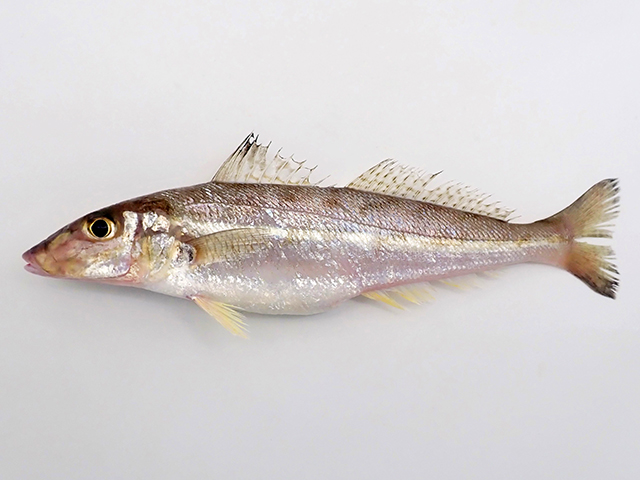| Sillaginidae (Smelt-whitings) |
| 30 cm SL (male/unsexed) |
|
demersal; marine; depth range 0 - 60 m, non-migratory |
| Indo-Pacific: Singapore, Thailand, China, Hong Kong, Taiwan, Philippines, and southern Japan. Possibly distributed throughout the Indo-West Pacific from Delagoa Bay, South Africa to Okinawajima, Japan but not recorded from Australia or southern New Guinea. Very similar to Sillago burrus. |
|
Dorsal spines (total): 12-12; Dorsal soft rays (total): 18-20; Anal spines: 2-2; Anal soft rays: 17-19; Vertebrae: 34-34. Swim bladder with three rudimentary anterolateral extensions instead of four; differs from S. maculata in lacking well developed anterolateral extensions reaching to level of vent. Body color is silvery with scattered dark brown elongate blotches on the sides. |
| Occur in inshore coastal waters, commonly in embayments on silty bottoms (Ref. 9679). Juveniles have been known to burrow in the sand (Ref. 6208). Oviparous (Ref. 205), multiple spawner (Ref. 56320). Small local fisheries exist throughout the range of the species. The flesh is prone to spoil rapidly and the Oriental sillago is not considered as highly as the inshore sillaginids (Ref. 6205). S. aeolus has not been found in association with S. burrus or S. maculata. |
|
Not Evaluated (N.E.) Ref. (130435)
|
| harmless |
Source and more info: www.fishbase.org. For personal, classroom, and other internal use only. Not for publication.
